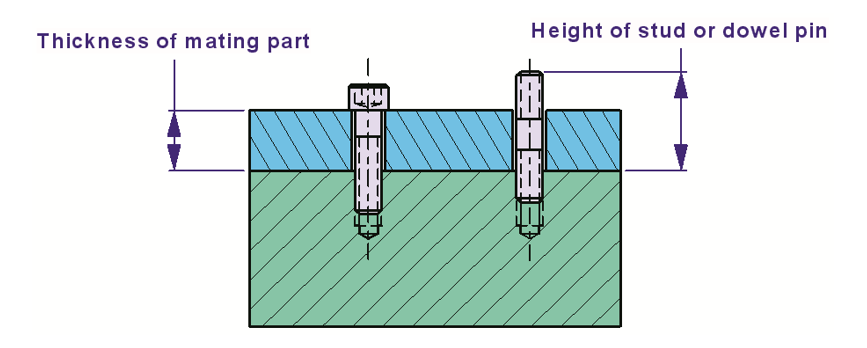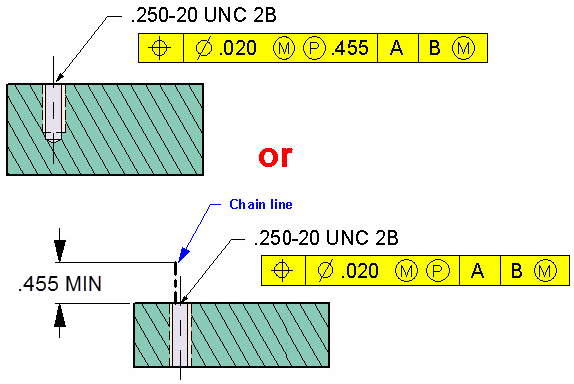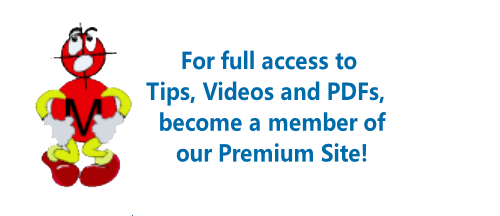Projected Tolerance (#5A)
(In accordance with the ASME Y14.5-2018 standard)
PDF is Available with GD&T Reference Center Subscription.
The Projected tolerance zone modifier is generally used for threaded holes and holes that will receive a pin (usually a press fit) and the designer is concerned that the screw or pin projecting from the hole might interfere with the surface of the clearance hole in the mating part. In these cases, it is more important to know where the stud or fastener will be rather than where the hole or tapped hole is [Y14.5-2018 Para 10.4.1.2].
The projected value is usually the maximum thickness of the mating part or the maximum height of the pin or stud.

The specified value for the projected tolerance zone is a minimum. The specified tolerance applies only to the projection of the hole indicated by the projected tolerance.
The symbol is placed in the feature control frame as of the 1994 Standard. Prior to this, the symbol was placed in a separate frame under the feature control frame. The amount the tolerance is projected is usually written next to the symbol. For clarity the direction and height of the projected tolerance may be indicated with a heavy chain line drawn closely adjacent to an extension of the center line of the hole.

In a model where the direction is ambiguous (threaded thru holes), the 2018 standard allows the projection direction to be defined by the side of the part where the leader terminates instead of using a chain line [para 6.4.7].
This tip is in accordance with ASME Y14.5-2018.
This tip was originally released in October 1997.

